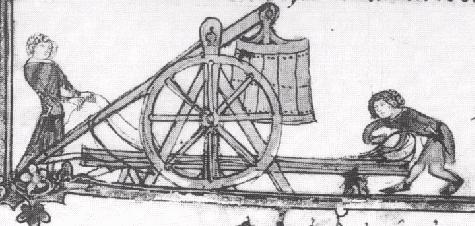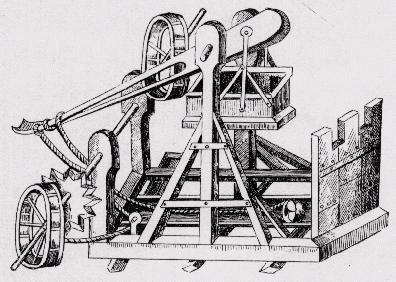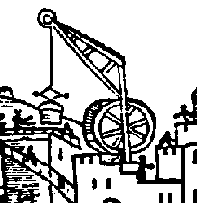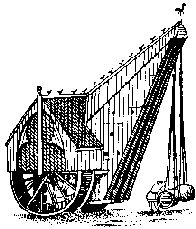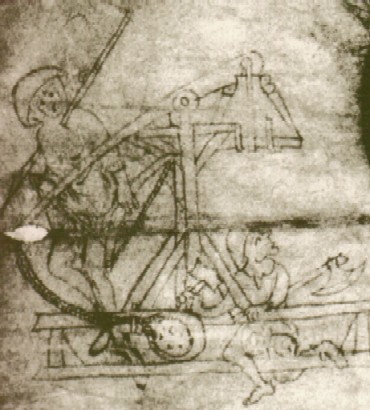
|
- The sling is long - you'll see a lot of this in other drawings..
- The sling appears to be held closed with a thin cord.
- The engine's crew get right in amongst the machinery.
- The archer beside the machine is being hit by a 'spear' -
indicating that the siege engines were fairly close to the target,
certainly within the range of the defender's fire. This enemy fire
could be in the form of counter-bombardment by opposing trebuchets,
heavy bolts from great crossbows or springaulds - or arrows from archers and crossbowmen.
The impaled archer may have been speared by hand, but he may be
intended to represent the victim of another war-engine, as elsewhere in
the original is a representation of a great crossbow and its crew of
Carlisle defenders.
- The crewman is holding a mallet, presumably to trigger the device.
- The weight box has the suspension straps passing under it, rather than just taking the weight on the side timbers.
- There is also a not-entirely-clear structure drawn as if a
part of the supporting uprights, forming an "inverted triangle" shape.
This may be worth further investigation.
No doubt you will have noticed that this is the original from which the Grey Co Trebuchet title illustration is taken...
|



